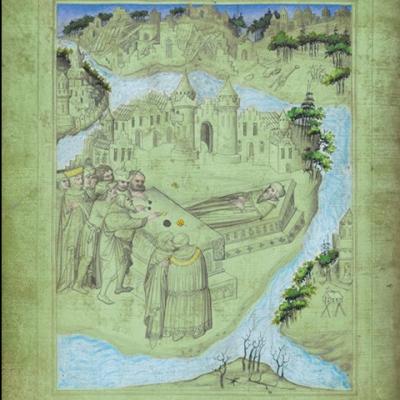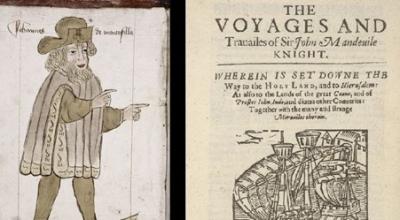The Knight and the Tomb

Worship at Aristotle’s supposed tomb with Sir John Thomas Mandeville in the 14th century. This illustration is from chapter 3 of the British Library manuscript (Add. Ms. 24189) containing The Voyages and Travails of Sir John Mandeville, Knight. While describing the region of Mount Athos in northern Greece, which he wrongly believes to be an island not a peninsula, he reports,
‘In this country was Aristotle born, in a city that men clepe Stagyra, a little from the city of Thrace. And at Stagyra lieth Aristotle; and there is an altar upon his tomb. And there make men great feasts for him every year, as though he were a saint. And at his altar they holden their great councils and their assemblies, and they hope, that through inspiration of God and of him, they shall have the better council’.
The book was a sensation and inspired Marco Polo. Mandeville came from St. Albans, but fled after killing a rival in a duel. He worked for the sultan and travelled through Greece, Turkey, Egypt, Palestine, India and even China. The book was originally written in French. Aristotle is more likely to have been buried in Euboea, where he died.


